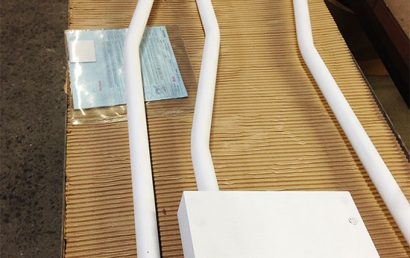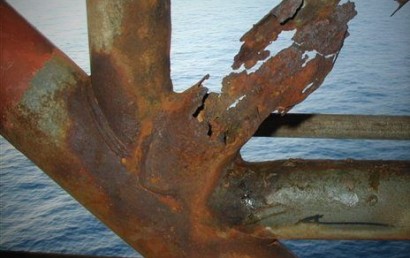The Causes, Impact, And Prevention Of Metal Dusting
Between 350°C and 800°C (a high carbon activity environment) a catastrophic form of corrosion can result. This is referred to as metal dusting. A powdery mixture of oxides, metal carbides, and carbon is produced when a base material is diffused by carbon. Fortunately, there is now an effective way of resisting metal dusting through aluminized coatings.
Industries in Which Metal Dusting Is a Problem
The perfect environment for metal dusting to occur is between the temperatures just mentioned, which contains H2 and CO. Any number of industrial environments deal with issues involving metal dusting, including the following:
- Fuel cells
- DIR (direct iron reduction)
- Oil refining/catalyst regeneration
- Ammonia and methanol production
- CCS (carbon capture and storage)
- Coal gasification
- Metal carburizing
- HyCO/Syngas production
- Steam reforming hydrogen production
Gas and oil process industries make particularly effective use of aluminized coatings for the prevention of metal dusting.
The Process of Corrosion
A diffusion of carbon into the base material is the first step in metal dusting. A powdery mixture of oxides, metal carbides, and metal particles are formed by the combination of carbon and metal. A potentially catastrophic and rapidly occurring form of corrosion is the end result of metal dusting which results from an autocatalytic activity.
The Prevention of Corrosion
When attacking the issue of metal dusting, three principal methods are used:
- Diffusion coatings
- Gas-phase inhibitors
- Use of an alternative alloy
To provide metal dusting resistance, alloys commonly receive added chromium, silicone, aluminum, and copper. But there can be a side effect of pursuing corrosion resistance by the optimizing of an alloy. Certain desirable mechanical properties can be lost, and cost can be added by the user of this technique.
To inhibit metal dusting, hydrogen sulfide and other gas-phase inhibitors are frequently used. Though effective, these compounds might poison catalysts. Additionally, expense of removal from waste streams or from products may be necessitated.
Blocking Metal Dusting Through Aluminum Diffusion Coating
Today it is possible to provide superior metal dusting resistance while still allowing the use of cheaper materials or the maintaining of a base material’s mechanical properties by using aluminized diffusion coating.
It is true, however, that the operating conditions under which these coatings are used and applied have a direct effect on the aluminized coating’s life. Yet another reason why proper, appropriate application methods must be used when applying such coatings (the use of aluminized tubes is one example).
Protect Against Metal Dusting With A&A Coatings
For years, A&A Coatings has been providing thermal spray coatings for not only the gas and oil industry, but for a wide array of businesses and other various industries. The following regularly make use of our thermal spray protective coating techniques:
- Wire drawing
- Wind energy
- Valves
- Textile manufacturing
- Solar energy
- Rubber manufacturing
- Pump repair
- Pulp and paper
- Printing machinery
- Power and energy
- Pharmaceutical and medical processing
- Converting
- Compressor
- Petrochemical
- Mold and dies
- Mining
- Metal production and processing
- Material handling
- Marine
- Industrial machinery
- Fluid handling
- Food and beverage processing
- Electronics and semi-conductor
- Defense and military
- Chemical
- Bottling and canning
- Biochemical
- Automotive
- Agricultural
- Aerospace and rotorcraft
Contact us today to see how our thermal spray coatings can be of benefit to you and your company.




